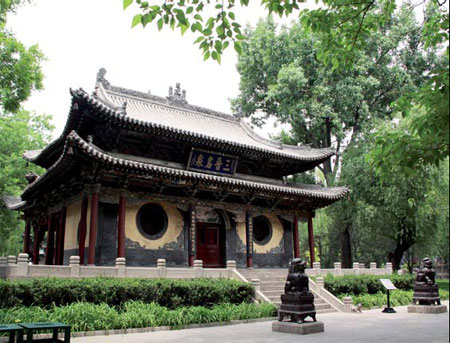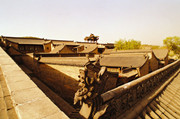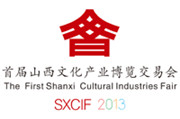Modern industry, ancient culture
( China Daily )
Updated: 2012-10-12
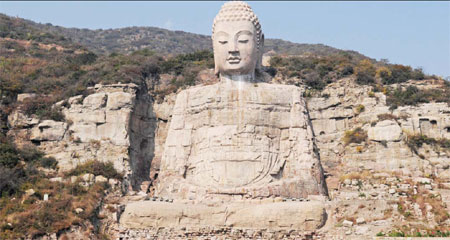
|
Top: The 63-meter-tall Giant Buddha of Mengshan Mountain. Above: The back of an ancient theater stage in Jinci Temple. Photos Provided to China Daily |
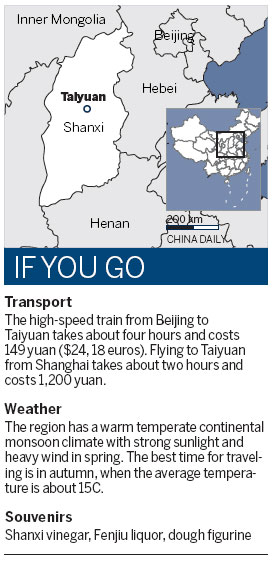
Taiyuan combines the best of two eras
The turbulence of history has left very few ancient Chinese mansions intact, and the passage of years makes it even harder to preserve their typically wooden structure.
Sadly, only two original Tang Dynasty (AD 618-907) mansions can be found in Shanxi province, where it is estimated that 90 percent of Chinese architecture from before the Yuan Dynasty (1271-1368) exists. Its capital, Taiyuan, the political, economic and cultural hub of the province, still offers the best of ancient North China's culture.
During the Qing Dynasty (1644-1911), Shanxi merchants became the epitome of national wealth for their cleverness in managing their fortunes. During this period, Taiyuan became the financial center of the Qing Dynasty. The capital has become a hub for heavy industrial since 1949, with its surrounding areas accounting for more than half of China's total coal mining output.
However, Taiyuan is adjusting its reliance on heavy industries, which have brought it wealth but also heavy pollution. The city is balancing its industry structure in an effort to attract tourists to its rich and storied culture. Here are some of the places you should not miss.
1. Jinci Temple
Located 25 kilometers away from downtown Taiyuan, Jinci Temple is a grand collection of ancient wooden buildings set against a lush landscape of cypresses that was built in memory of Tang Shuyu, the local king during the Western Zhou Dynasty (c.11th century-771 BC). His decision to make use of the nearby Jin River to irrigate and foster agriculture transformed Taiyuan from barren lands to a thriving city.
The Hall of the Sacred Mother is the most famous building in Jinci Temple, with its 43 Song Dynasty (960-1279) figures of maids set in two rows to serve Yijiang, Tang Shuyu's revered mother. The clay sculptures inside are an important source for scholars studying the clothing style of the Song Dynasty.
On the right side of the hall stands a famous cypress that is at least 1,000 years old. Legend has it that a Taoist was selling ointments under the dead cypress, but no one was buying them. The Taoist sighed and plastered ointment on the tree, which soon sprang to life. Today, most travelers stop to pray under the tree in the hope of bringing eternal health to their family.
Nanlao Spring gurgles from the hill behind the hall and flows ceaselessly in any season. The statue of the Sacred Mother, the maid sculptures and the spring are known as the three wonders of Jinci Temple.
2. The Giant Buddha of
Mengshan Mountain
This 1,461-year-old Buddha statue was carved on one side of a south-facing hill cliff located 20 kilometers southwest of downtown Taiyuan. It is believed to be 162 years older than the world's largest sitting stone sculpture of the Buddha in Leshan, Sichuan province, but is not as well known.
The Mengshan Mountain Buddha statue is 63 meters tall. When first discovered in the 1980s, parts of the main body were buried, and it was not until 2008 that it was opened to visitors after years of restoration.
3. Tianlong Mountain Grottoes
These grottoes, 40 kilometers southwest of Taiyuan, include a series of 24 caves in the mountainside. Nestled within them are 1,500 Buddhist sculptures that are as magnificently carved as they are solemn. The second and third grottoes have a history of more than 1,500 years.
The multi-story ninth grotto is home to an eight-meter-tall Maitreya statue as well as an 11-meter-tall, soberly clothed Bodhisattva statue. The ornaments on the stone carvings are succinct and in line with the dogma of Buddhism. The roof of the shrine is decorated with motifs such as lotus and dragon.
4. Shanxi Museum
The four-story building is located at 13 Binhe West Road, situated along the Fen River in central Taiyuan. The collection of antiques on display is rich and important as Chinese civilization first began to develop in Shanxi, Shaanxi and Henan provinces. The building itself is architecturally pleasing, and is designed to depict structures of the past. Visitors will be mesmerized by the many Buddhist statues, porcelain, paintings and calligraphy.
Food and Drinks
Shanxi claims to have more than a hundred varied styles of noodles - there are sliced noodles, pulled noodles and maoerduo (cat's ears) to name a few. Daoxiaomian (sliced noodles) are the most popular. The cook's ability to fashion noodles from dough requires years of training and is considered an art.
The famous dish here is guoyourou (fried boiled pork). Like most Taiyuan delicacies, it is flavored with vinegar and tastes salty and is crispy. Travelers might also try some local snacks such as tounao, a Muslim soup with three large pieces of lamb and Chinese herbs.
China Daily
(China Daily 10/12/2012 page23)
